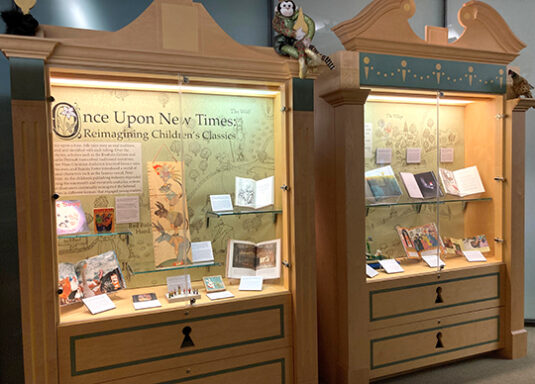 Come see tales transformed at “Once Upon New Times: Reimagining Children’s Classics,” currently on display at the Cotsen Children’s Library! Curated as a companion to the larger exhibit in the Milberg Gallery of Firestone Library, each item offers a different perspective on a cherished classic. From highly imaginative physical transformations to diverse adaptations, we hope you enjoy these selections from the Cotsen collections, curated by Andrea Immel, Dana Sheridan, and Katie Zondlo. We have a few items to share below…
Come see tales transformed at “Once Upon New Times: Reimagining Children’s Classics,” currently on display at the Cotsen Children’s Library! Curated as a companion to the larger exhibit in the Milberg Gallery of Firestone Library, each item offers a different perspective on a cherished classic. From highly imaginative physical transformations to diverse adaptations, we hope you enjoy these selections from the Cotsen collections, curated by Andrea Immel, Dana Sheridan, and Katie Zondlo. We have a few items to share below…
Katie and I were especially delighted that LEGO’s “Once Upon a Brick” Pop-Up Book made it in the exhibit! Originally posted on the blog here, this set not only renders “Jack and the Beanstalk” in 3D, the pop-up mechanism delights visitors both young and young-at-heart.
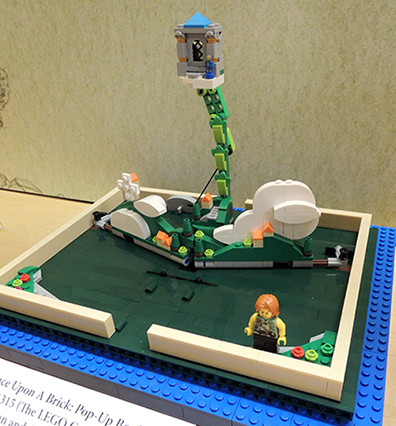
LEGO. Once Upon A Brick: Pop-Up Books. Ideas No. 21315 (The LEGO Group, 2018). Jason Allemann and Grant Davis (LEGO Ideas member submitters), Wesley Talbott and Crystal Marie Fontan (LEGO designers/graphics).
Visitors can also take a look at a kamishibai version of Alice in Wonderland, which includes a red-dressed Alice and a white rabbit in snappy pinstriped trousers. Those unfamiliar with the Japanese performance art of kamishibai can learn more here.
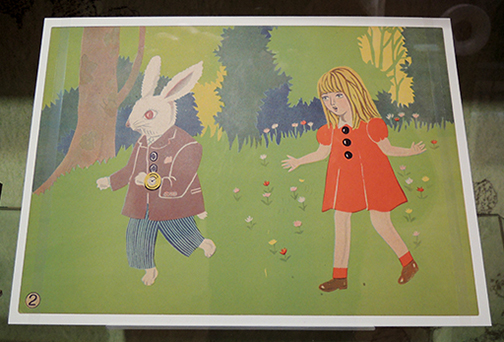
Takahashi Gozan, adaptor. Fushigi no kuni no Arisu-chan. Illustrated by Seiichi Yuno. (Tokyo: Nihon Kamishibai Gento Kabushiki Kaisha, Shōwa 27, 1952). Cotsen Children’s Library, Department of Special Collections, Princeton University Library
Also featured is the gorgeous book The Singing Bones by multiple award winning, and New York Times bestselling, author, illustrator, artist, and filmmaker, Shaun Tan. Masterfully rendered, the book distills classic fairy tales down to a single page (or sometimes a paragraph!) and represents it with a powerfully elemental sculpture. You can hear Tan discuss it, as well as his other books, here.
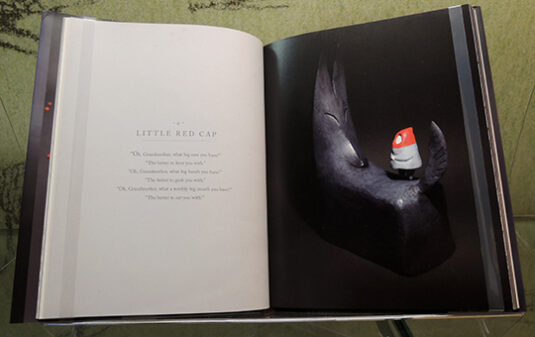
Shaun Tan, reteller/illustrator. The Singing Bones: Inspired by Grimms’ Fairy Tales. (New York: Arthur A. Levine Books, 2016). Cotsen Children’s Library, Department of Special Collections, Princeton University Library
I’ll also share this humorous 1939 pamphlet from General Electric Company titled “Mrs. Cinderella.” Here the story of Cinderella is retold using General Electric products (while also thwarting goblins messing with getting dinner prepared for her happily ever after). You can read more about this particular item in Andrea Immel’s excellent post on Cotsen’s Curatorial blog.
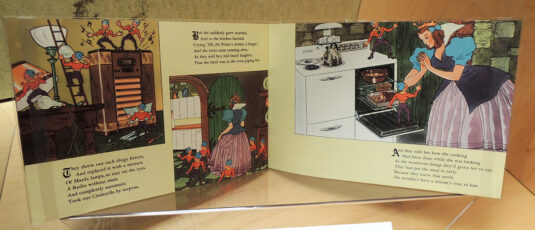
Mrs. Cinderella. Illustrated by Corydon Bell. (New York: General Electric Co., 1939). Cotsen Children’s Library, Department of Special Collections, Princeton University Library
“Once Upon New Times: Reimagining Children’s Classics” runs through March 2024. If you’re in the area, please come and visit! You will find directions and hours to Cotsen Children’s Library here, and we have some fun community programs and events coming up in connection with the exhibit (hint: think gingerbread architecture)!

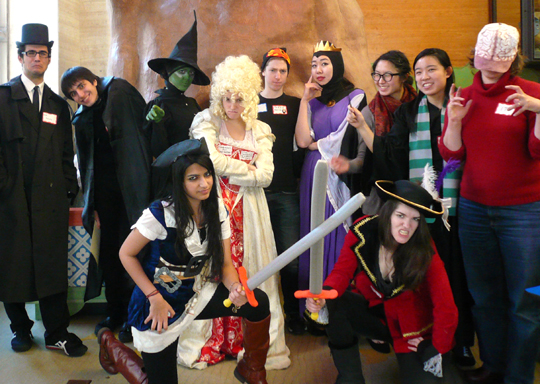
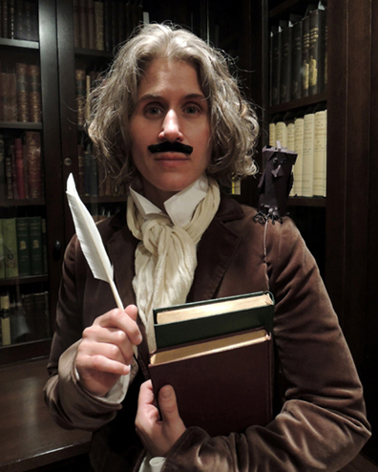 Starting the post off with the master of suspense himself, Mr. Edgar Allan Poe. This was a simple
Starting the post off with the master of suspense himself, Mr. Edgar Allan Poe. This was a simple 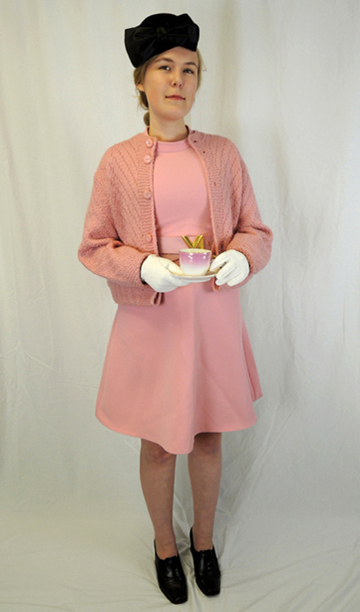
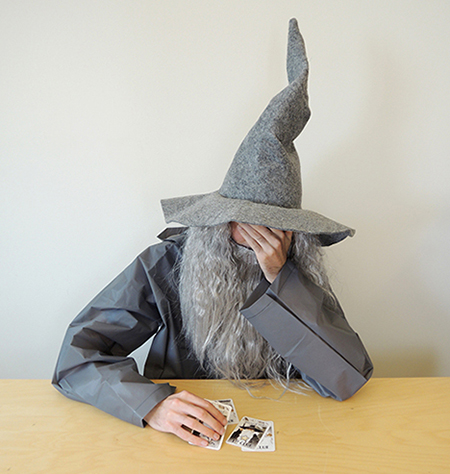 2023 summer intern Daniel Dias not only got to test a
2023 summer intern Daniel Dias not only got to test a 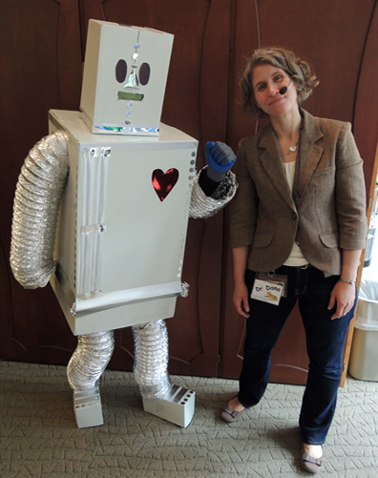 On the topic of being cajoled into costumes, we present Ian Dooley, Cotsen’s former Curatorial Assistant, who climbed into a robot costume to make a
On the topic of being cajoled into costumes, we present Ian Dooley, Cotsen’s former Curatorial Assistant, who climbed into a robot costume to make a 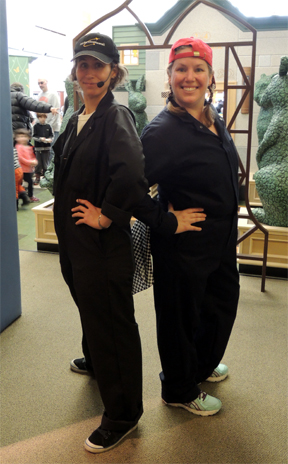 While these costumes might not seem terribly exciting, Katie and I both wanted to include them on the list. Our pit crew coveralls served as well at a Cars and Trucks and Things that Go creative
While these costumes might not seem terribly exciting, Katie and I both wanted to include them on the list. Our pit crew coveralls served as well at a Cars and Trucks and Things that Go creative  Switching over to the forces of good, we have Princeton University student Sylvia Jacobson, who gamely stepped up to be a Literal Fairy Godmother for our children’s literary society. Here we see her sporting an old wedding dress I spruced up with some rainbow fabric. Sylvia the Sparkly granted wishes very specifically. Definitely
Switching over to the forces of good, we have Princeton University student Sylvia Jacobson, who gamely stepped up to be a Literal Fairy Godmother for our children’s literary society. Here we see her sporting an old wedding dress I spruced up with some rainbow fabric. Sylvia the Sparkly granted wishes very specifically. Definitely 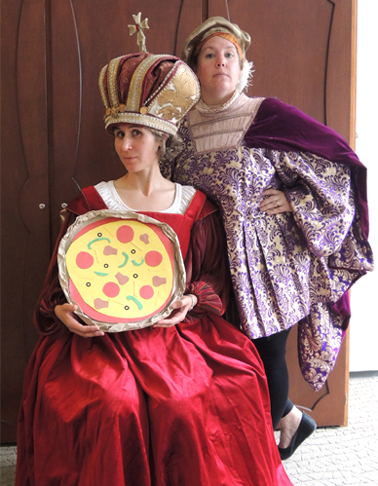
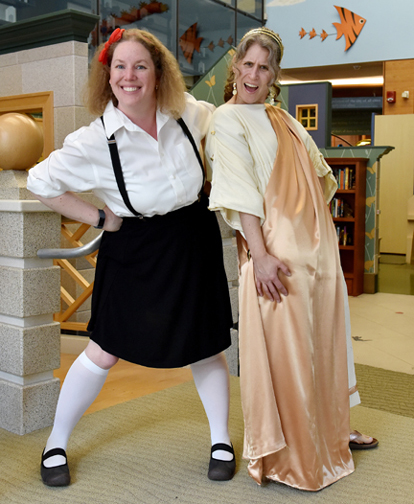
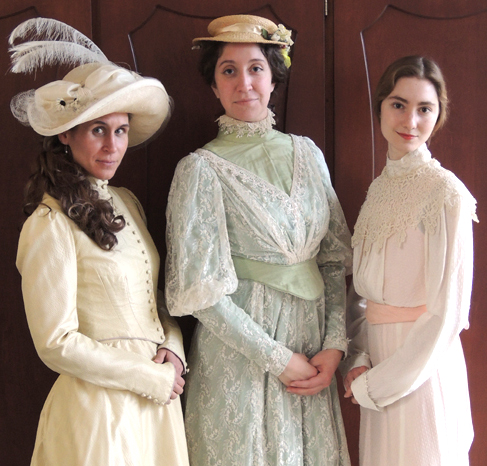 One of my favorite programs was a historic Victorian tea, complete with costumes, games, and a glorious tea time (blog readers might recognize our beloved
One of my favorite programs was a historic Victorian tea, complete with costumes, games, and a glorious tea time (blog readers might recognize our beloved 
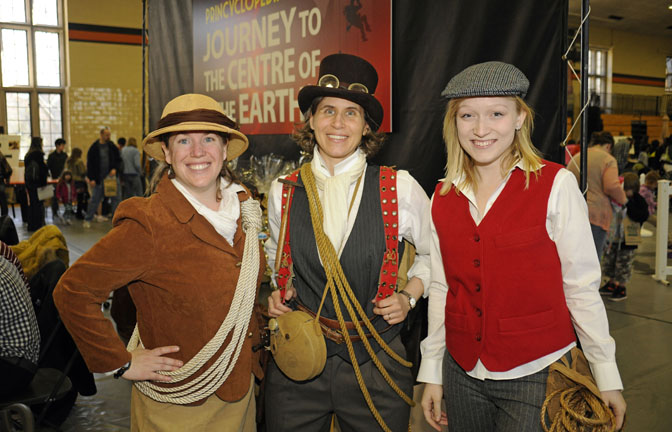 Here we have three Victorian spelunkers at a massive Journey to the Centre of the Earth event we hosted in 2013. On the right is Princeton University student Kim Freid. As you can see, we were ready to tackle anything the day threw at us, thanks to all the ancient camping equipment I scored on ebay!
Here we have three Victorian spelunkers at a massive Journey to the Centre of the Earth event we hosted in 2013. On the right is Princeton University student Kim Freid. As you can see, we were ready to tackle anything the day threw at us, thanks to all the ancient camping equipment I scored on ebay!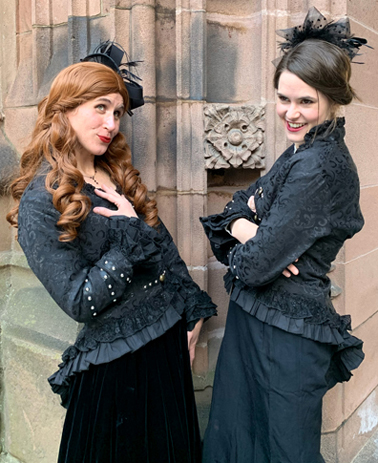 We started this post with Poe, and we’ll finish with the equally gothic
We started this post with Poe, and we’ll finish with the equally gothic 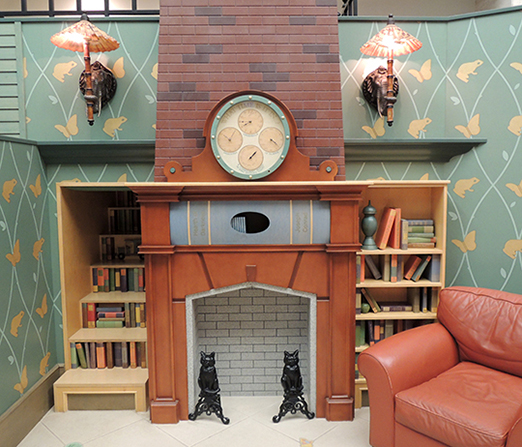 Recently, a visitor to our
Recently, a visitor to our 
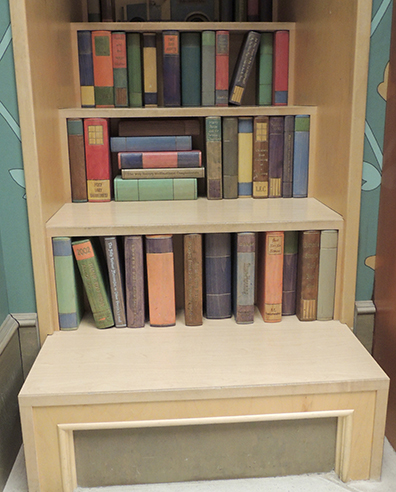
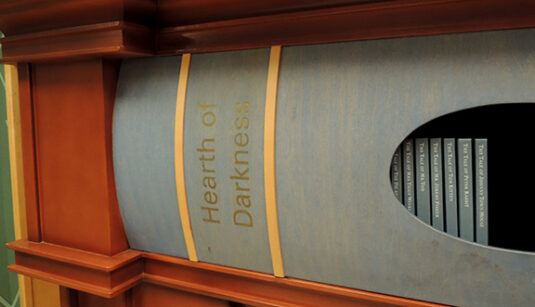 Below is an incomplete list of our tweaked titles (come
Below is an incomplete list of our tweaked titles (come